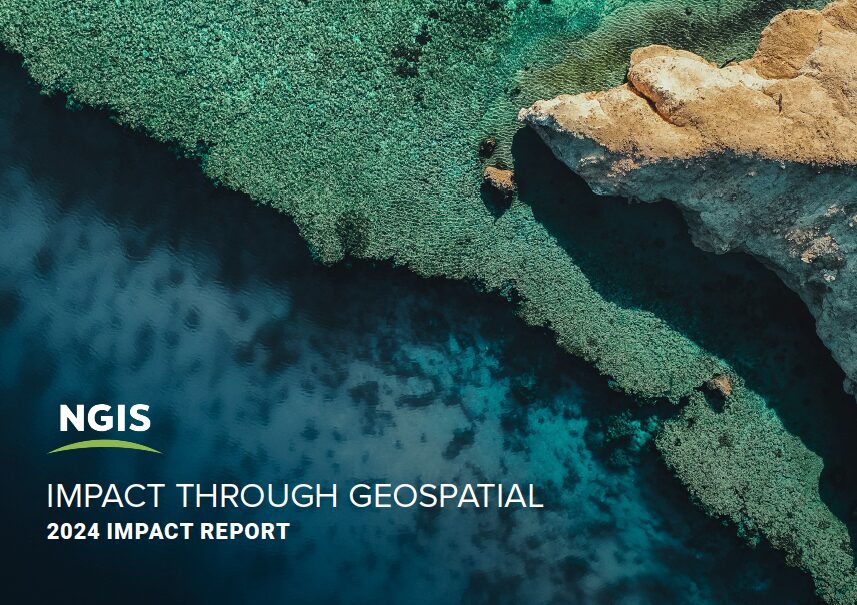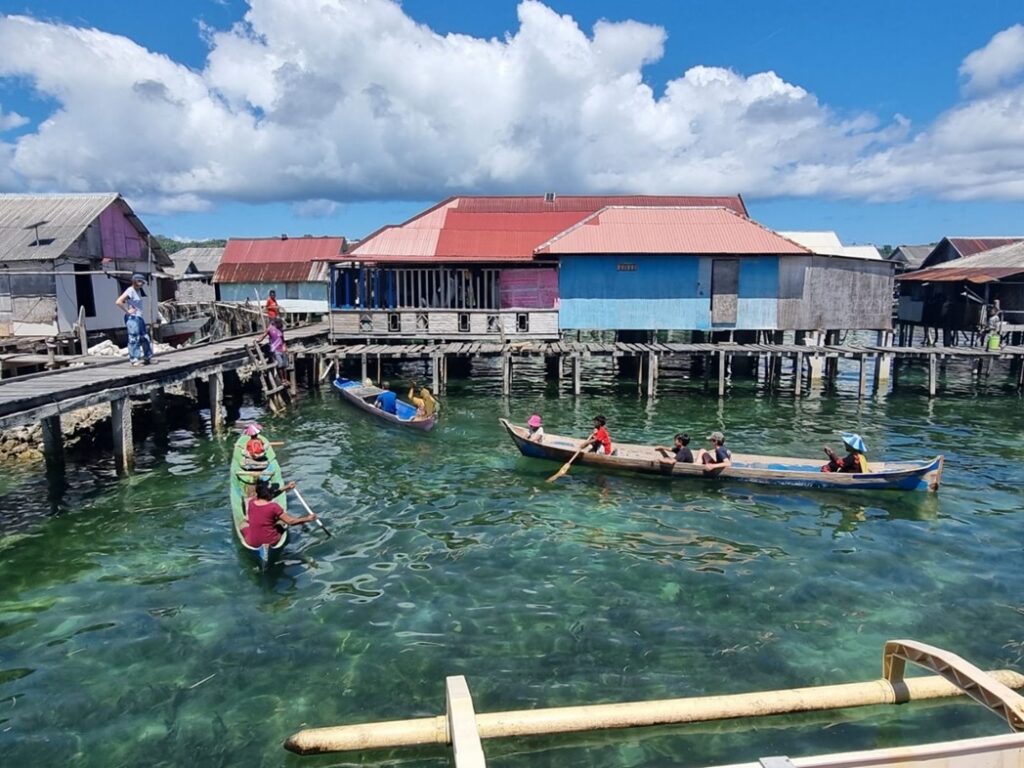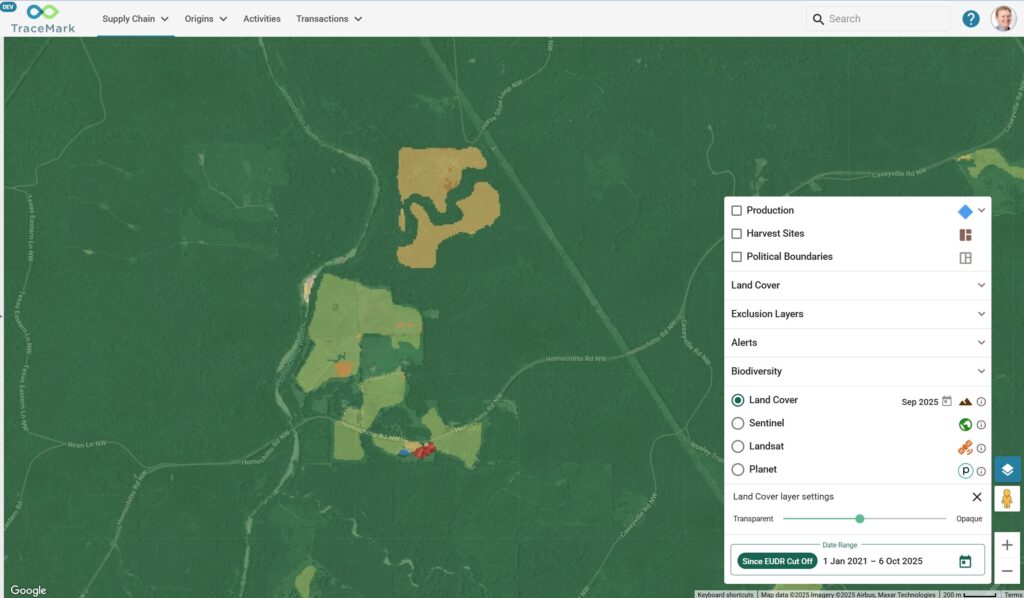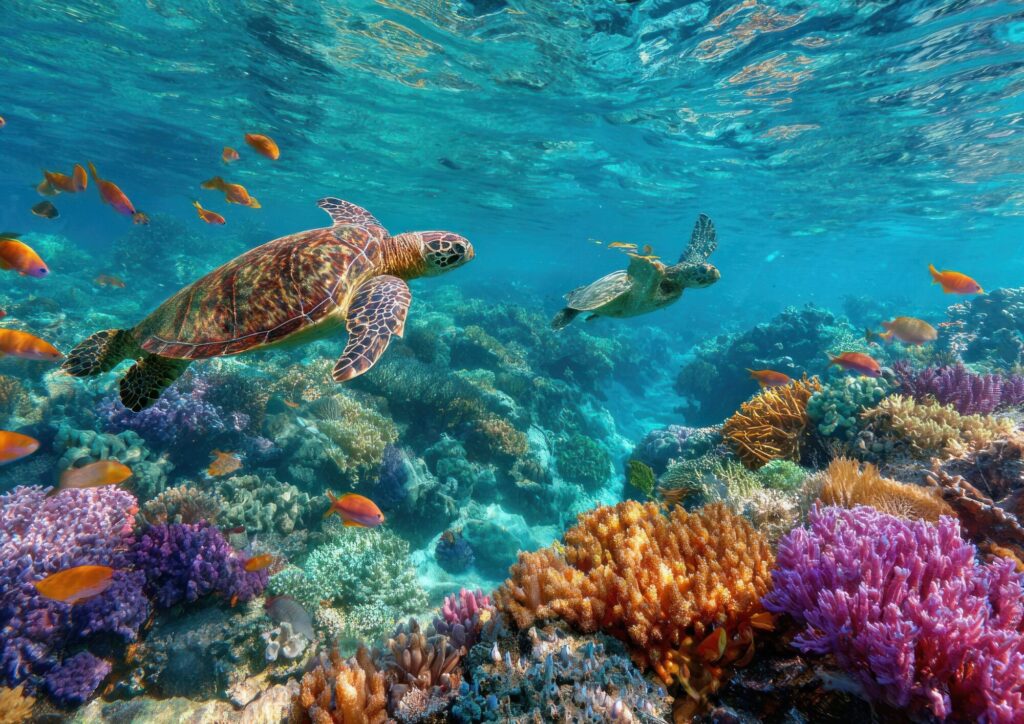Sustainable Fashion
In 2023, the Materials Impact Explorer (MIE) was publicly launched at the Textile Exchange Conference by Textile Exchange and its partners Google, WWF and NGIS. Built on Google Earth Engine and utilising the Google Cloud Platform, the MIE assesses the environmental risks associated with various fibres, considering factors such as biodiversity, climate change, greenhouse gases and water use.
The MIE provides capability for brands, retailers, and suppliers to evaluate potential impacts and dependencies at the origins of their supply chain in the countries where the farm, forests, or initial production facilities are based. The initial release of the MIE provided metrics and recommendations across the key categories of Climate, Biodiversity and Freshwater.
In June 2024 the Materials Impact Explorer provided a significant update with additional risk categories for both forests and air pollution to further extend the ability to generate comprehensivecountry of origin risks and recommendations for global supply chains.
NGIS AND TEXTILE EXCHANGE PARTNERSHIP
NGIS and Textile Exchange have continued the investment into the MIE to provide a roadmap for both expanding
risk and recommendation content along with addressing new and evolving frameworks and regulations. The 2024
update to the MIE included collaboration with a broad range of organisations,one of the tools users, Veronique Rochet,
Senior Director of Sustainability at PUMA, has said.
“At PUMA we are currently taking steps to mitigate biodiversity risks and address environmental pollution risks through our 10FOR25 targets and supplier programs related to climate, chemicals, water, and air. We recently used the Materials Impact Explorer (MIE) tool provided by Textile Exchange to inform our biodiversity risk assessment of our key raw materials such as polyester and cotton. The MIE tool has helped us to review if we have the right strategies in place to address the risk of the potential impact on biodiversity and the risk of dependency in terms of environmental assets and ecosystem services that our organisation relies on to function. We value having forests included as a risk category. PUMA has already committed to sourcing all bovine leather used in our products from verified deforestation-free supply chains by 2030 or earlier. The MIE tool analyses risk in terms of potential impacts and dependencies at the very start of the value chain (Tier 4).”
BEYOND MIE
NGIS and Textile Exchange have also been collaborating to provide a pathway for brand compliance to new laws and regulations such as the European Union Deforestation Regulation (EUDR). By combining the industry specific country level risk ratings and recommendations from the MIE with the first mile traceability and compliance workflows from TraceMark™, NGIS and Textile Exchange are providing a high value first mile traceability platform specifically designed for textiles.
This TraceMark™ Fashion initiative is an opportunity for brands to get ahead of the impending EUDR curve in sustainable sourcing that has initially focused on food based commodities but will expand across textile commodities in the future.
TEXTILE EXCHANGE DRIVING POSITIVE CHANGE
Textile Exchange, a global non-profit organisation, is at the forefront of driving beneficial outcomes in climate and nature within the fashion, apparel, and textile industry across fiber and raw material production. They convene the industry to support their mission to inspire and equip people to accelerate the adoption of preferred materials through clear actionable guidance.
Related Articles
Here are more related articles you may be interested in.








